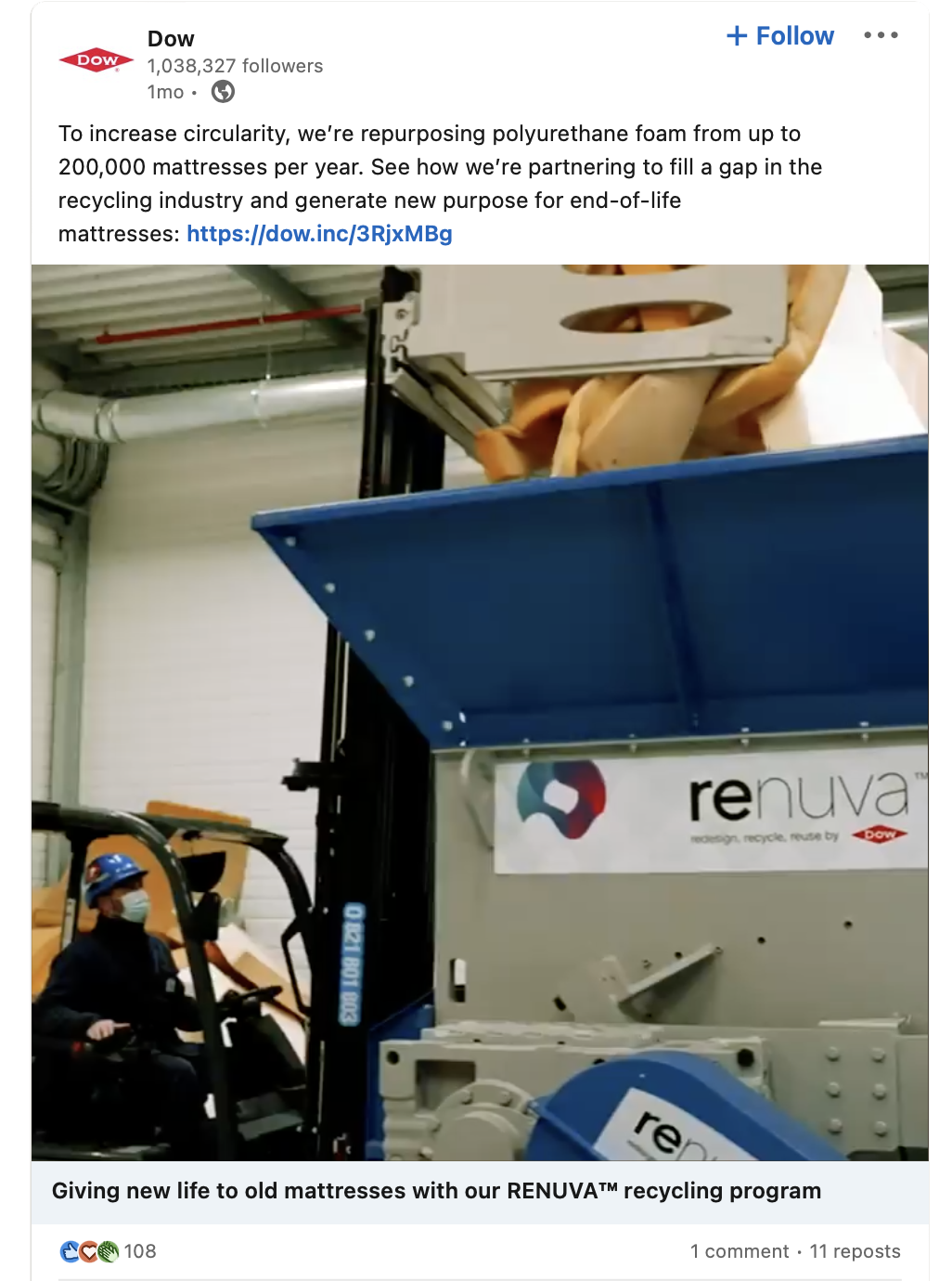Social media is transforming how chemical companies connect with customers. Yet many brands still under utilize its potential or struggle to capitalize on this crucial opportunity.
The reach of platforms like LinkedIn, Twitter, and YouTube offers invaluable avenues to engage prospects, demonstrate expertise, and build credibility. But achieving real impact takes more than basic brand-building.
This article reveals how to move beyond the basics and truly harness social media for tangible ROI. Learn strategic tactics to:
- Research and intimately understand your chemical audiences
- Create captivating content tailored to their interests
- Promote wins that attract future customers
- Listen and participate in industry conversations
- Continuously refine your strategy using hard data
The time is now for chemical brands to get serious about social media and master this new sales and marketing arena. Follow these best practices to connect with buyers, establish thought leadership, and drive real business value.
Dig Deep Into Your Audience
The foundation of any effective social media strategy is thoroughly understanding your target chemical buyers. Conduct in-depth research to uncover details like:
- Demographics: What types of companies, industries, locations, and size of organizations are your ideal customers? What types of roles and titles do they have?
- Pain points: What challenges are your potential customers facing? What problems can your products or services help solve?
- Interests: What information, topics, and issues do your audiences care about? What trends are important to them?
- Motivations: Why would your target accounts follow your brand? What value can you provide them?
- Platform behaviors: Where are your audiences most active? Do they prefer visual, educational, or entertainment content? How do they engage?
For example, Dow Chemical uses social media to showcase sustainability initiatives and community involvement. In one post they shared how they are "repurposing polyurethane foam from up to 200,000 mattresses per year, partnering to fill a recycling gap and give mattresses new purpose."

Armed with these insights, you can create tailored social initiatives, messaging, and content specifically engineered to resonate with your targets. This helps avoid wasted time pitching irrelevant audiences or pushing content they don't care about.
Thorough audience research and segmentation is a prerequisite for successful social media marketing in the chemical industry. Make sure you dig into the details of who you want to reach, what matters to them, and how social platforms fit into their customer journey. This data-driven foundation sets you up for real impact.
Be Where Your Audience Is
Once you've researched your target audiences, the next step is meeting them where they are already active. Promoting on the right social platforms for your personas makes all the difference in engagement.
Conduct analysis through tools like social listening and analytics to determine where each target customer segment gravitates. Focus your investment on the 2-3 core platforms where your audiences are concentrated.
For chemical companies, these are often:
- LinkedIn: For connecting with professionals in manufacturing, operations, R&D, and other technical roles. Position yourself as an industry thought leader.
- Twitter: For real-time industry conversation, commentary, and networking. Establish your brand as an authority.
- YouTube: For educational videos and visual demonstrations of chemical technologies and products. Show your expertise in action.
Avoid spreading your efforts too thinly across an array of networks. Identify where you can make the biggest impact with your resources based on where your customers already are.
Cross-promote content across channels to maximize exposure. But tailor content style, images, captions, and engagement approach appropriately per platform. Meet audiences in their preferred environment.
Establish Thought Leadership
One major benefit of social media for chemical companies is the ability to highlight your expertise. Social platforms enable sharing educational content that positions your brand as a thought leader. Consider creating content, including:
- Explainer videos breaking down complex chemical processes or technologies into easy-to-understand animations
- Trends reports analyzing innovations in materials, applications, manufacturing methods, and other industry advances
- White papers or ebooks diving deep into regulations, safety standards, compliance considerations, and other crucial industry topics
- Industry commentary and insights on significant news events, mergers and acquisitions, policy changes, and more
This authoritative thought leadership content establishes your company as a trusted, credible resource within the chemical field. It shows you stay on the cutting edge and have valuable insights to share.
Promote Customer Success
An impactful way chemical brands can leverage social media is showcasing customer success stories. Strategically highlight how your products or services have solved real problems for clients. For example, you can create:
- Case studies featuring the results and ROI a customer achieved using your materials or solutions for an application
- Before and after photos/videos demonstrating how your offering improved manufacturing efficiency or safety
- Testimonials have customers describe in their own words how you enhanced product quality or performance
- Behind-the-scenes photos/videos giving a look inside how a customer uses your chemical solutions in their operations
- Press mentions and awards earned by customers partially made possible due to your products
Promoting customer wins helps build credibility and trust among prospects. It provides "social proof" - others have benefitted from choosing your brand. Based on a report from the CMO Council, 87% of B2B buyers believe that online content significantly or moderately influences their choice of vendors. Showcasing how your products or services have solved challenges for other chemical companies can make a major difference in influencing selection.
However, social media also enables scrutiny of chemical companies like never before. Environmental groups have leveraged platforms to pressure major brands over ingredients and sustainability. For example, in 2011, the Campaign for Safe Cosmetics led a highly publicized boycott of Johnson & Johnson over potentially harmful chemicals in their products. This forced the company to commit to reformulating its baby and adult product lines in 2015.
The transparent nature of social media means chemical brands must proactively manage reputation and listen to consumer demands. While promoting positive initiatives, they also need strategies to address criticism that can spread rapidly online. Brandwatch's B2B Social Media Report showed even leaders like DuPont have room for improving their presence and engagement.
Showcasing how your products or services have solved challenges for other chemical companies can make a major difference in influencing selection. But you also need to be prepared for scrutiny and pressure that social platforms can bring.
Listen and Engage
A mistake some chemical brands make is viewing social media as only a broadcasting channel. While sharing your expertise is crucial, social platforms also provide invaluable avenues for two-way engagement with prospects and customers.
Actively listen and monitor social conversations relevant to your brand and industry for mentions. When you're part of the dialogue and interacting directly with audiences, you build credibility. Ways to engage followers include:
- Responding promptly and thoughtfully to all questions and feedback: Have a process for monitoring social channels and assigning team members to respond to comments, DMs, etc. Provide helpful answers and appreciation for feedback.
- Asking for opinions on industry issues and current events: Pose questions on trends, innovations, regulations. This gives prospects a voice and shows you value their perspectives.
- Soliciting ideas for the type of content followers want to see: Directly survey audiences on what information would help them most. This can uncover needs to address in future content.
- Sharing user-generated content like customers using your hashtag: Reposting photos/videos customers take showcasing your products makes them feel valued.
- Participating in Twitter chats or LinkedIn groups relevant to your field: Join industry conversations where your audiences are already discussing relevant topics in the chemicals industry. Provide informed perspectives.
This active engagement establishes your company as reliable partners invested in customers' needs and considerations. Cultivating these social connections pays dividends in brand sentiment, partnerships, and lead generation.
Continuously Analyze Performance
The key to optimizing any social media strategy is continuously analyzing performance and refining based on data. Leverage built-in and third-party analytics tools to evaluate metrics, including:
- Audience growth: Are you increasing followers and reaching new accounts? Track follower counts over time and monitor changes by industry, company, role, and location.
- Content reach: What % of your audience sees different post types? Compare reach across platforms as well as different content formats like video vs blogs.
- Engagement: How many likes, comments, shares, clicks do posts get? Seek high engagement rates and benchmark against competitors.
- Link clicks and conversions: How much traffic and leads do social posts drive to your site? Optimize social CTAs and offers for conversion.
- Sentiment and conversations: How are people reacting and talking about your brand? Monitor keywords and hashtags for positive and negative commentary.
Regularly review these metrics segmented by platform, audience, content type, and other attributes. Identify your best-performing content and engagement strategies. Double down on what works and refine underperforming areas.
With a commitment to continuous optimization guided by data, chemical brands can maximize the ROI of their social media efforts. Cost-effectively generate leads, boost visibility, and build communities.
Stay Informed and Ahead
Subscribe to our blog if you're interested in learning how to correctly implement SEO tailored for the chemical industry. We’re here to help you make informed decisions and elevate your online presence with proven, efficient strategies.
Schedule a Free Strategy Session
To learn more about developing an optimized social media strategy tailored for your chemical company, contact the experts at HEXNET. Our data-driven approach helps brands establish thought leadership, promote wins, engage audiences, and drive real business value through social platforms.
Let's discuss how a targeted social program can benefit your organization. With the right strategy, social media can become an invaluable marketing and sales channel.
